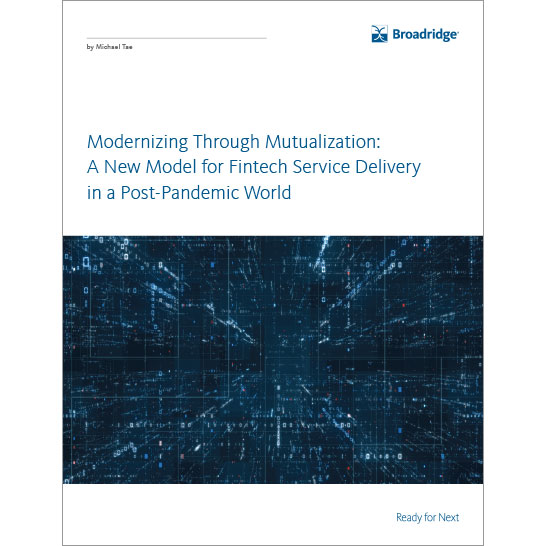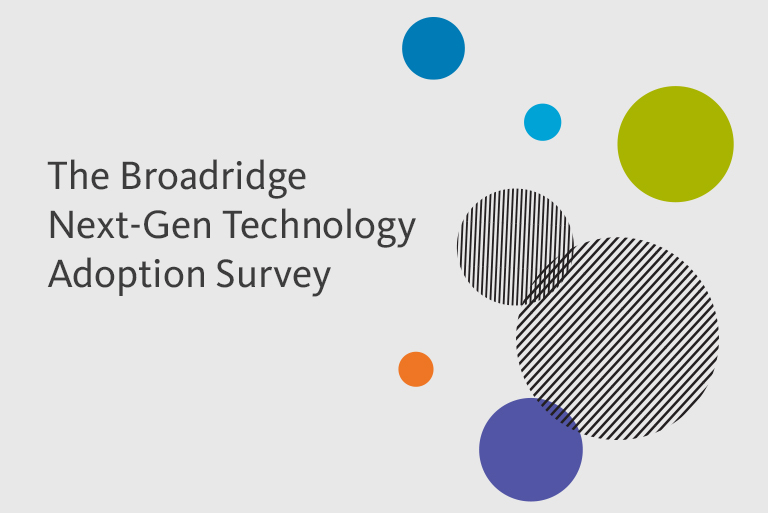Modernizing Through Mutualization
Establishing a new model for fintech service delivery in a post-pandemic world.
Over the last decade, several trends in the global financial services industry have spurred firms to work together with fintech providers to modernize their operations and optimize their front, middle, and back-office functions.
These trends only accelerated during the pandemic, as the sudden shift to remote work and a massive spike in trade activity expedited firms’ need to digitize their operations and strengthen resiliency.

As a result, many financial services firms are beginning to recognize that the most strategic way to prepare for the future is through mutualization, where participants share in the benefits of an industry solution provided by a reliable, trusted and independent third party.
Mutualization enables firms to:
- Reduce costs and overall transformation risks.
- Accelerate time-to-market.
- Free up management attention and critical resources that can be devoted to other core needs.
- Gain more timely access to next-generation technology and new insights that can drive revenue growth.
Successfully leveraging fintech solutions to mutualize technology functions will be a hallmark of firms that have emerged successfully from the pandemic.
Although the concept of mutualization has been around for years, this white paper re-examines it in the context of the post-pandemic world.
In it, we will:
- Review the forces driving mutualized solutions and the benefits they provide.
- Provide an overview of what this new delivery model should entail.
- Outline a roadmap for global financial services firms embarking on this journey.
Mike leads major transformational projects by driving revenue-generating initiatives that meet the business needs of our clients and align with Broadridge’s leading capabilities. Previously, he served as Broadridge’s Head of Corporate Strategy and was responsible for our strategy, acquisitions, partnerships, and other innovation-related activities. Prior to joining Broadridge in 2017, Mike was Senior Executive Vice President of Worldwide Services for Microstrategy. Prior to that role, he served as Director of Investments for the Troubled Asset Relief Program at the U.S. Department of Treasury and held positions at Merrill Lynch and McKinsey & Company.
Contact Us
Welcome back, {firstName lastName}.
Not {firstName}? Clear the form.




